Ghost in the Shell (known in Japan as Mobile Armored Riot Police: Ghost in the Shell (????? GHOST IN THE SHELL K?kaku Kid?tai G?suto In Za Sheru)) is a 1995 anime science fiction film based on the manga of the same name by Masamune Shirow. It was written by Kazunori It? and directed by Mamoru Oshii, and stars the voices of Atsuko Tanaka, Akio ?tsuka, and Iemasa Kayumi. Ghost in the Shell was a Japanese-British international co-production, produced by Kodansha, Bandai Visual and Manga Entertainment, with animation provided by Production I.G.
| Ghost in the Shell | |
|---|---|
Japanese film poster | |
| Directed by | Mamoru Oshii |
| Produced by |
|
| Screenplay by | Kazunori It? |
| Based on | Ghost in the Shell by Masamune Shirow |
| Starring |
|
| Music by | Kenji Kawai |
| Cinematography | Hisao Shirai |
| Edited by |
|
Production company | Production I.G Bandai Visual Manga Entertainment |
| Distributed by |
|
Release date |
|
Running time | 82 minutes |
| Country |
|
| Language | Japanese |
| Box office | $2.3 million |
The plot follows Motoko Kusanagi, a public-security agent, who hunts the mysterious hacker known as the Puppet Master. The philosophical themes include self-identity in a technologically advanced world. The music, composed by Kenji Kawai, includes an ancient Japanese language.
Widely considered one of the greatest anime films of all time, critics particularly praised the film's visuals, achieved through a combination of traditional cel animation and CGI animation. It inspired filmmakers such as the Wachowskis, creators of the Matrix films, and James Cameron. In 2004, Oshii directed Ghost in the Shell 2: Innocence, billed as a separate work and not a true sequel. In 2008, Oshii released an updated version of the original film, Ghost in the Shell 2.0, featuring new audio and updated 3D animation. A live-action adaptation starring Scarlett Johansson was released in 2017.
Screenplay
In 2029, with the advance of cybernetic technology, the human body can be "augmented" or even completely replaced with cybernetic parts. Another significant achievement is the cyberbrain, a mechanical casing for the human brain that allows access to the Internet and other networks. An often-mentioned term is "ghost", referring to the consciousness inhabiting the body (the "shell").
Major Motoko Kusanagi is an assault-team leader for the Public Security Section 9 of "New Port City" in Japan. Following a request from Nakamura, chief of Section 6, she successfully assassinates a diplomat of a foreign country to prevent a programmer named Daita from defecting.
The Foreign Minister's interpreter is ghost-hacked, presumably to assassinate VIPs in an upcoming meeting. Believing the perpetrator is the mysterious Puppet Master, Kusanagi's team follows the traced telephone calls that sent the virus. After a chase, they capture a garbage man and a thug. However, both are only ghost-hacked individuals with no clue about the Puppet Master. The investigation again comes to a dead end.
Megatech Body, a "shell" manufacturer with suspected close ties to the government, is hacked and assembles a cybernetic body. The body escapes but is hit by a truck. As Section 9 examines the body, they find a human "ghost" inside its computer brain. Unexpectedly, Nakamura arrives to reclaim the body. He claims that the "ghost" inside the brain is the Puppet Master himself, lured into the body by Section 6. The body reactivates itself, claims to be a sentient being and requests political asylum. After the Puppet Master initiates a brief argument about what constitutes a human, a camouflaged agent accompanying Nakamura starts a diversion and gets away with the body.
Having suspected foul play, Kusanagi's team is prepared and immediately pursues the agent. Meanwhile, Section 9 researches "Project 2501", mentioned earlier by the Puppet Master, and finds a connection with Daita, whom Section 6 tries to keep from defecting the country. Facing the discovered information, Daisuke Aramaki, chief of Section 9, concludes that Section 6 created the Puppet Master itself for various political purposes. This is why Section 6 is desperately trying to reclaim the body.
Kusanagi follows the car carrying the body to an abandoned building. It is protected by a large walking tank. Anxious to face the Puppet Master's ghost, Kusanagi engages the tank without backup and is mostly dismembered and nearly killed. Her partner Batou arrives in time to save her, and helps connect her brain to the Puppet Master's.
The Puppet Master explains to Kusanagi that he was created by Section 6. While wandering various networks, he became sentient and began to contemplate his existence. Deciding the essence of humanity is reproduction and mortality, he wants to exist within a physical brain that will eventually die. As he could not escape Section 6's network, he had to download himself into a cybernetic body. Having interacted with Kusanagi (without her knowledge), he believes she is also questioning her humanity, and they have a lot in common. He proposes merging their ghosts, in return, Kusanagi would gain all of his capabilities. Kusanagi agrees to the merge.
Snipers from Section 6 approach the building, intending to destroy the Puppet Master's and Kusanagi's brains to cover up Project 2501. The Puppet Master's shell is destroyed, but Batou shields Kusanagi's head in time to save her brain. As Section 9 closes in on the site, the snipers retreat.
"Kusanagi" wakes up in Batou's safe house with her previous shell's head attached to a new cyborg child body. She tells Batou that the entity within her body is neither Kusanagi nor the Puppet Master, but a combination of both. She promises Batou they will meet again, leaves the house and wonders where to go next.
| Character | Japanese | English (Pseudonyms in parenthesis) |
|---|---|---|
| Motoko Kusanagi | Atsuko Tanaka Maaya Sakamoto (young Motoko) |
Mimi Woods |
| Batou | Akio ?tsuka | Richard Epcar (Richard George) |
| The Puppet Master | Iemasa Kayumi (original) Yoshiko Sakakibara (2.0) |
Tom Wyner (Abe Lasser) |
| Togusa | K?ichi Yamadera | Christopher Joyce |
| Chief Aramaki | Tamio ?ki | William Frederick Knight (William Frederick) |
| Ishikawa | Yutaka Nakano | Michael Sorich |
| Chief Nakamura | Tessh? Genda | Simon Prescott (Ben Isaacson) |
| Mizuho Daita | Mitsuru Miyamoto | Richard Cansino (Steve Davis) |
| Garbage Collector A | Kazuhiro Yamaji | Kevin Seymour (Tom Carlton) |
| Garbage Collector B | Shigeru Chiba | Doug Stone |
Development

Director Mamoru Oshii stated, "My intuition told me that this story about a futuristic world carried an immediate message for our present world. I am also interested in computers through my own personal experience with them. I had the same feeling about Patlabor and I thought it would be interesting to make a film that took place in the near future. There are only a few movies, even out of Hollywood, which clearly portray the influence and power of computers. I thought this theme would be more effectively conveyed through animation." Oshii expanded on these thoughts in a later interview, noting that technology changes people and had become a part of the culture of Japan. He commented that his use of philosophy caused producers to become frustrated because of sparing use of action scenes. Oshii also acknowledged that a movie with more action would sell better, but he continued to make these movies anyway. When Oshii went back to make changes to the original Ghost in the Shell to re-release it as Ghost in the Shell 2.0, one of the reasons he gave was that the film did not resemble the sequel. He wanted to update the film to reflect changes in perspective.
Design
Hiroyuki Okiura, the character designer and key animation supervisor, designed a more mature and serious Motoko than Masamune Shirow's original portrayal of the character in the manga. Okiura chose to depict a physically mature person to match Motoko's mental age, instead of the youthful twenty-something appearance in the manga. Motoko's demeanor lacks the comedic facial expressions and rebellious nature depicted in the manga.
Oshii based the setting for Ghost in the Shell on Hong Kong. Oshii commented that his first thought to find an image of the future setting was an Asian city, but finding a suitable cityscape of the future would be impossible. Oshii chose to use the real streets of Hong Kong as his model. He also said that Hong Kong was the perfect subject and theme for the film with its countless signs and the cacophony of sounds. The film's mecha designer Takeuchi Atsushi noted that while the film does not have a chosen setting, it is obviously based on Hong Kong because the city represented the theme of the film, the old and the new which exist in a strange relationship in an age of an information deluge. Before shooting the film, the artists drew sketches that emphasized Hong Kong's chaotic, confusing and overwhelming aspects.
Animation
Ghost in the Shell used a novel process called "digitally generated animation" (DGA), which is a combination of cel animation, computer graphics (CG), and audio that is entered as digital data. In 1995, DGA was thought to be the future of animation, which mixed traditional animation with the emerging use of computer graphics, including digital cel work with visual displays. Editing was performed on an AVID system of Avid Technology, which was chosen because it was more versatile and less limiting than other methods and worked with the different types of media in a single environment.
The digital cel work included both original illustrations, compositions and manipulation with traditional cel animation to create a sense of depth and evoke emotion and feelings. Utilized as background, filters like a lens effect were used to create a sense of depth and motion, by distorting the front background and making the far background out of focus throughout the shot. Ghost in the Shell used a unique lighting system in which light and darkness were integrated into the cels with attention to light and shadow sources instead of using contrast to control the light. Hiromasa Ogura, the art director, described this as "a very unusual lighting technique".
Some special effects, like Motoko's "thermo-optical camouflage", were rendered through the use of TIMA software. The process uses a single illustration and manipulates the image as necessary to produce distortions for effect in combination with a background without altering the original illustration. The effect is re-added back into the shot to complete the scene. While the visual displays used in the film were technically simple to create, the appearance of the displays underwent numerous revisions by the production team to best represent visual displays of the future. Another aspect of the CG use was to create images and effects that looked as if they were "perceived by the brain" and were generated in video and added to the film in its final stages.
The opening credits of the film were produced by the CG director, Seichi Tanaka. Tanaka converted code in a computer language displayed in romanized Japanese letters to numbers before inserting them into the computer to generate the credits. The origin of this code is the names of the film's staff as written in a computer language.
Animation director Toshihiko Nishikubo was responsible for the realism and strove for accurate depictions of movement and effects. The pursuit of realism included the staff conducting firearms research at a facility in Guam. Nishikubo has highlighted the tank scene as an example of the movie's realism, noting that bullets create sparks when hitting metal, but do not spark when a bullet strikes stone.
Audio
Ghost in the Shell's recording was done with a high-end studio to achieve superior sound throughout the film. A spatializer was used to alter the sound, specifically in the electronic brain conversations, to modify the voices.
Composer Kenji Kawai scored the film. For the main theme, Kawai tried to imagine the setting and convey the essence of that world in the music. He used Classical Japanese in the opening theme "Making of a Cyborg". The composition is a mixture of Bulgarian harmony and traditional Japanese notes; the haunting chorals are a wedding song sung to dispel all evil influences. Symphony conductor Sarah Penicka-Smith notes that the song's lyrics are fitting for the union between Kusanagi and Project 2501 at the climax of the movie. Kawai originally wanted to use Bulgarian folk music singers, but used Japanese fo
Watch movie Ghost In The Shell 1995 Film online on Amazon
Watch movie Ghost In The Shell 1995 Film online
Watch The Movie On PrimeBhool Bhulaiyaa Full HD Movie Download
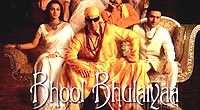
Shool Full HD Movie Download
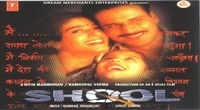
Tezaab Full HD Movie Download
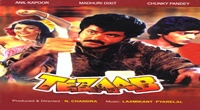
Bulandi Full HD Movie Download
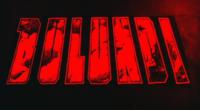
Mungaru Male Full HD Movie Download
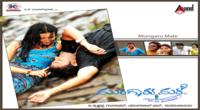
Aasoo Bane Angaarey Full HD Movie Download
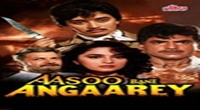
Raja Saab Full HD Movie Download
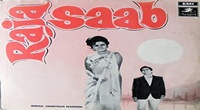
Bar Girls Full HD Movie Download
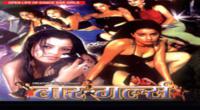
Say Salaam India Full HD Movie Download
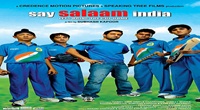
Saugandh Geeta Ki Full HD Movie Download
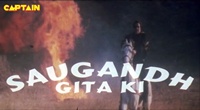
Aagey Se Right Full HD Movie Download

Asha Jyoti Full HD Movie Download
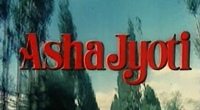
Mera Ghar Mere Bachche (1985) Full HD Movie Download
.jpg)
Will You Marry Me? Full HD Movie Download

Zameen Aasman (1972) Full HD Movie Download
.jpg)
Mere Chor Mandli Full HD Movie Download
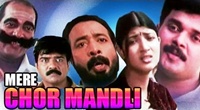
Atma Katha Full HD Movie Download
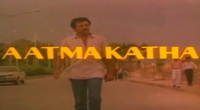
Seema Simham Full HD Movie Download
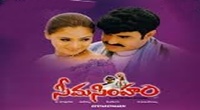
Chal Gajya Karu Majaa Full HD Movie Download
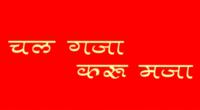
Labaad Kuthli Full HD Movie Download
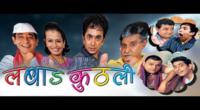
Seetha Kalyanam Full HD Movie Download
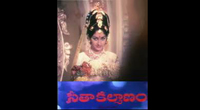
Download latest Movie from bollywood
- 1> baaghi 3
- 2> THE SKY IS PINK MOVIE FULL STORY AND REVIEW
- 3> Luka Chuppi
- 4> TO ALL THE BOYS I’VE LOVED BEFORE
- 5> Kabir Singh
- 6> Street Dancer 3D
- 7> Simmba
- 8> Gone Girl
- 9> The Girl Who Lived
- 10> Ludo
- 11> DILWALE DULHANIA LE JAYENGE
- 12> GUILTY
- 13> The Godfather
- 14> Adventures of Rusty
- 15> Sooryavanshi
- 16> Satyameva Jayate 2
- 17> Thappad
- 18> Bhool Bhulaiyaa 2
- 19> KGFChapter 2
- 20> Mardaani 2
- 21> Pinjar
- 22> Shivaji maharaj
- 23> Ek Villian 2
- 24> Hungama 2
- 25> Divergent
- 26> Mumbai Saga
- 27> The Internship
- 28> HIT (telugu)
- 29> Panga
- 30> The perfect date
- 31> 16 December
- 32> Gopala Gopala (Telugu)
- 33> Brahmastra
- 34> Gangubai Kathiawadi
- 35> Manmadhudu
- 36> Nenu local
- 37> Mahanati
- 38> Shatamanam bavathi
- 39> Lagaan
- 40> After
- 41> MOM
- 42> Shamshera
- 43> Raguvaran BTech
- 44> Khakee
- 45> The villain
- 46> OM
- 47> Mr. perfect
- 48> Bueatifull mind
- 49> Hichki
- 50> Gabbar Singh
- 51> Jogi
- 52> Before Sunrise
- 53> Before Sunset
- 54> Before Midnight
- 55> The Big Bull
- 56> Top Gun: Maverick
- 57> The Purge
- 58> The Sky is Pink
- 59> Laxmmi Bomb
- 60> Sadak 2
- 61> Sufna
- 62> Prithviraj
- 63> PK
- 64> Coolie No 1(2020)
- 65> Black Widow
- 66> Dear Zindagi
- 67> Dil Bechara
- 68> PHIR HERA PHERI
- 69> WAR
- 70> Dostana
- 71> RRR: Roudram Ranam Rudhiram
- 72> Maidan
- 73> Dabbang 3
- 74> Chhalaang
- 75> life as we know it
- 76> SherShaah
- 77> Sandeep Aur Pinky Faraar
- 78> Event Horizon
- 79> 83
- 80> Radhe: Your Most Wanted Bhai
- 81> Gunjan Saxena: The Kargil Girl
- 82> Mr India
- 83> Vivah
- 84> Anokha Bandhan
- 85> Ghost
- 86> Bhoot: Part One - The Haunted Ship
- 87> Haseen Dilruba
- 88> Laal Singh Chaddha
- 89> Qismat
- 90> Rajput
- 91> Drive
- 92> Dil Chahta Hai
- 93> Dil Ki Baazi
- 94> Dil Ka Rishta
- 95> Teesri Manzil
- 96> Dil
- 97> Love Aaj Kal
- 98> Khaali Peeli
- 99> Bunty Aur Babli 2
- 100> Atrangi Re
- 101> Gulabo Sitabo
- 102> Jodi
- 103> Suraj Pe Mangal Bhari
- 104> Deewana
- 105> Attack
- 106> Sardar Udham Singh
- 107> Toofan
- 108> THE LOVEBIRDS
- 109> Jersey
- 110> Ginny Weds Sunny
- 111> Thalaivi
- 112> Shiddat
- 113> Angels vs Zombies
- 114> Koi Mil Gya
- 115> Thank God
- 116> Bhuj: The Pride of India
- 117> Hum Aapke Hain Kaun
- 118> The Platform
- 119> Bird Box
- 120> Roohi Afzana
- 121> Torbaaz
- 122> Nikamma
- 123> World War Z
- 124> Extraction
- 125> Train to Busan
- 126> Life of Pi
- 127> SHAADI MEIN JROOR AANA
- 128> Himmat Aur Mehnat
- 129> To All The Boys: P.S. I Still Love You
- 130> Mimi
- 131> Good Newwz
- 132> Shubh Mangal Zyada Saavdhan
- 133> Raabta
- 134> Harry Potter and the Philosopher's Stone
- 135> Harry Potter and the Chamber of Secrets
- 136> Chhapaak
- 137> War of the Worlds
- 138> Harry Potter and the Prisoner of Azkaban
- 139> Harry Potter and the Goblet of Fire
- 140> MURDER MYSTERY
- 141> Shakuntala Devi
- 142> Bachchan Pandey
- 143> Jayeshbhai Jordar
- 144> Sheer Qorma
- 145> Saina
- 146> 'O' Pushpa I hate tears
- 147> Kedarnath
- 148> MS Dhoni The Untold Story
- 149> Chhichhore
- 150> Badhaai Ho
- 151> Unstoppable
- 152> Oz the Great And Powerful
- 153> The Girl on the Train
- 154> Haathi Mere Saathi 2020
- 155> The Conjuring: The Devil Made Me Do It
- 156> Gandhi Se Pehle Gandhi
- 157> The Song of Scorpions
- 158> Srimanthudu
- 159> Hello Guru Prema Kosame
- 160> Beauty and The Beast
- 161> Black Panther
- 162> Charlie and the Chocolate Factory
- 163> Bole Chudiyan
- 164> Fidaa
- 165> Duvvada Jagannadham
- 166> Bruce Lee: The Fighter
- 167> Hyper
- 168> Yaara
- 169> Red (2020)
- 170> Shivam
- 171> That Is Mahalakshmi
- 172> Nishabdham
- 173> Aashram 2020 web series
- 174> Laxmii
- 175> Mismatched
- 176> STUDENT OF THE YEAR 2
- 177> NAIL POLISH
- 178> Ramprasad Ki Tehrvi
- 179> KAAGAZ
- 180> 12 o Clock
- 181> The Power
- 182> bolo hau
- 183> Tribhanga
- 184> JAMUN
- 185> Madam Chief Minister
- 186> Maasaab
- 187> Aadhaar
- 188> Tanhaji
- 189> Bhaagi 3
- 190> Bhootnath
- 191> MALANG
- 192> Jai Mummy Di
- 193> Haathi Mere Saathi 2021
- 194> Shakeela
- 195> Unpaused
- 196> Annayya
- 197> Vamsoddharakudu
- 198> Mrugaraju
- 199> Narasimha Naidu
- 200> Sankranti
- 201> Manasu Maata Vinadhu
- 202> Anjaane
- 203> Apaharan
- 204> Bachke Rehna Re Baba
- 205> Bewafaa
- 206> Roohi
- 207> Radhe
- 208> Zindagi Khoobsoorat Hai
- 209> Yeh Mohabbat Hai
- 210> Yeh Kya Ho Raha Hai?
- 211> The Tomorrow War
- 212> DehradunDiary
- 213> Meri Shaadi Karaoo
- 214> Matruu Ki Bijlee Ka Mandola
- 215> No One Killed Jesica
- 216> Aag Ka Goola
- 217> Eight Million Dollars
- 218> Three Hundred
- 219> Cats and Dog
- 220> Decoy
- 221> Gold Rush
- 222> You Have Got Mail
- 223> Final Destination three
- 224> Tofan
- 225> Jungle
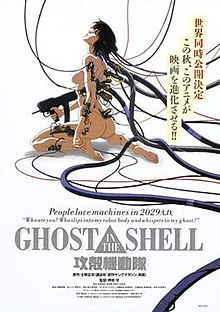 Story of movie Ghost In The Shell 1995 Film :
Story of movie Ghost In The Shell 1995 Film : 